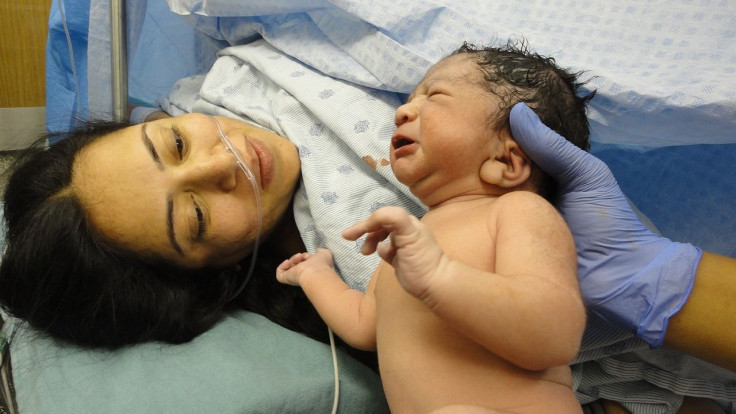Postpartum Depression: Scientists Find Seasons, Labor Pain Affect Mother’s Risk

Women who deliver their babies in certain seasons are less likely to suffer postpartum depression, according to new research.
Experts may have uncovered a few new factors in the development of the mental-health condition, which affects hundreds of thousands of women every year in the United States. The American Society of Anesthesiologists reported that research presented at its annual meeting this week suggests women who give birth in the fall or the summer are more likely to develop postpartum depression than women who deliver in the winter or the spring. The scientists behind the findings also saw a connection between the disorder and the length of the pregnancy, and whether or not the mothers used anesthesia during labor.
According to the society, women who delivered their infants earlier in their pregnancy were also more likely to develop postpartum depression. Women who did not have an epidural or other anesthesia during delivery were at a higher risk as well.
“Women who did not have anesthesia may have been at an increased risk for PPD because the pain associated with labor may have been traumatizing to the women during delivery,” the society explained in a statement, “or it’s possible those who declined anesthesia just happened to have intrinsic characteristics that made them more vulnerable to experiencing PPD.”
Previous research has suggested a link between a painful labor and and a higher risk of postpartum depression. Those findings also asserted that in the absence of an epidural or other relief during delivery, the pain might be intense enough to cause psychological harm.
The scientists who revealed the latest findings did not find a link from the depression disorder to the method of childbirth — whether the baby was delivered vaginally or through a caesarean section.
Other factors that affect a woman’s risk of developing PPD include race, as white women are less likely to have the disorder, and body mass, because a higher BMI is associated with a higher risk of the depression.
The scientists used data from more than 20,000 women’s medical records to come up with these risk factors. All of those women delivered children between June 2015 and August 2017 and a little more than 4 percent of them developed postpartum depression.
Statistics for postpartum depression vary, with some showing that one in nine women experience postpartum depression while others put the number as high as one in five. Even at the lowest end of the estimates, a few hundred thousand women are affected every year.
“We wanted to find out whether there are certain factors influencing the risk of developing postpartum depression that may be avoided to improve women’s health both physically and mentally,” lead study author Dr. Jie Zhou, from the Brigham & Women’s Hospital in Boston, said in the statement.
When it came to how far along the baby was in its gestation, Zhou said mothers who carried their babies longer might be less likely to become depressed because of their baby’s health: “It is expected that the mother will do better and be less mentally stressed when delivering a mature, healthy baby.”
He attributed the difference in statistics among the races to possible differences in socioeconomic status.
According to the Centers for Disease Control and Prevention, women are at a higher risk of depression in general if they are under stress and don’t have a lot of social support.
Symptoms of postpartum depression include feelings of being overwhelmed, sad or hopeless; changes in sleep and eating patterns unrelated to the newborn; feelings of anger, anxiety or irritability; and difficulty bonding with the baby. The U.S. National Institute of Mental Health also says a woman with postpartum depression may be “persistently doubting her ability to care for her baby” or thinking about harming herself and/or the infant.
© Copyright IBTimes 2025. All rights reserved.





















